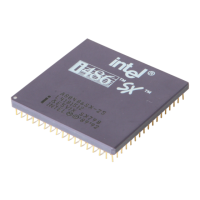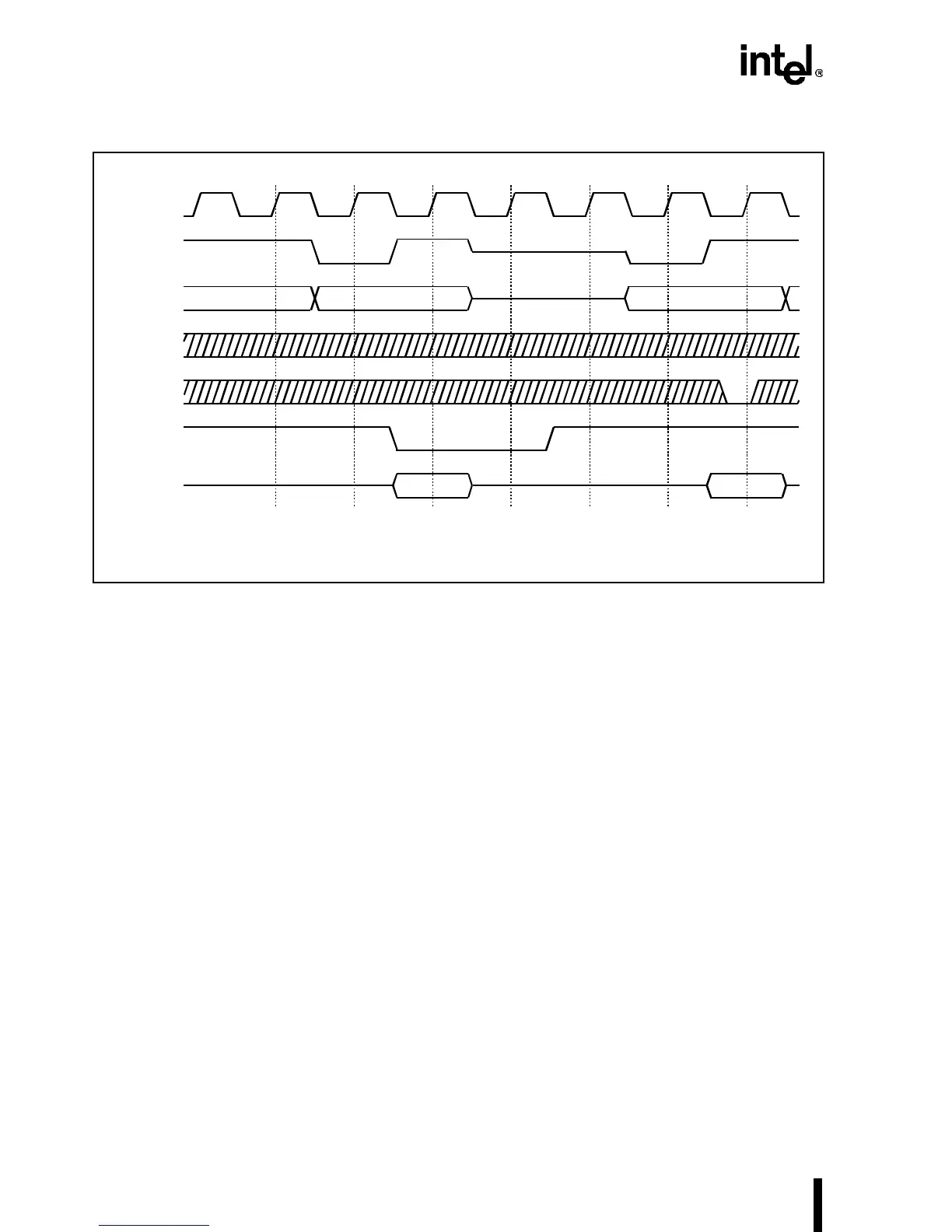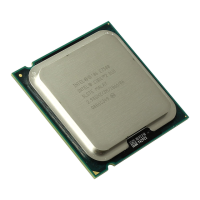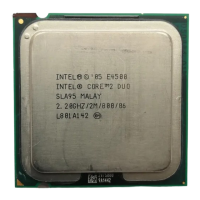EMBEDDED Intel486™ PROCESSOR HARDWARE REFERENCE MANUAL
4-44
Figure 4-34. Restarted Write Cycle
The device asserting BOFF# is free to run cycles while the Intel486 processor bus is in its high
impedance state. If backoff is requested after the Intel486 processor has started a cycle, the new
master should wait for memory to assert RDY# or BRDY# before assuming control of the bus.
Waiting for RDY# or BRDY# provides a handshake to ensure that the memory system is ready
to accept a new cycle. If the bus is idle when BOFF# is asserted, the new master can start its cycle
two clocks after issuing BOFF#.
The external memory can view BOFF# in the same manner as BLAST#. Asserting BOFF# tells
the external memory system that the current cycle is the last cycle in a transfer.
The bus remains in the high impedance state until BOFF# is deasserted. Upon negation, the
Intel486 processor restarts its bus cycle by driving out the address and status and asserting ADS#.
The bus cycle then continues as usual.
Asserting BOFF# during a burst, BS8#, or BS16# cycle forces the Intel486 processor to ignore
data returned for that cycle only. Data from previous cycles is still valid. For example, if BOFF#
is asserted on the third BRDY# of a burst, the Intel486 processor assumes the data returned with
the first and second BRDY# is correct and restarts the burst beginning with the third item. The
same rule applies to transfers broken into multiple cycles by BS8# or BS16#.
Asserting BOFF# in the same clock as ADS# causes the Intel486 processor to float its bus in the
next clock and leave ADS# floating low. Because ADS# is floating low, a peripheral may think
that a new bus cycle has begun even though the cycle was aborted. There are two possible solu-
tions to this problem. The first is to have all devices recognize this condition and ignore ADS#
until RDY# is asserted. The second approach is to use a “two clock” backoff: in the first clock
242202-147
CLK
ADS#
ADDR
SPEC
BRDY#
DATA
Ti T1 T2 Ti
From Processor
‡
Tb Tb T1b T2
BOFF#
RDY#
100 100
‡
‡

